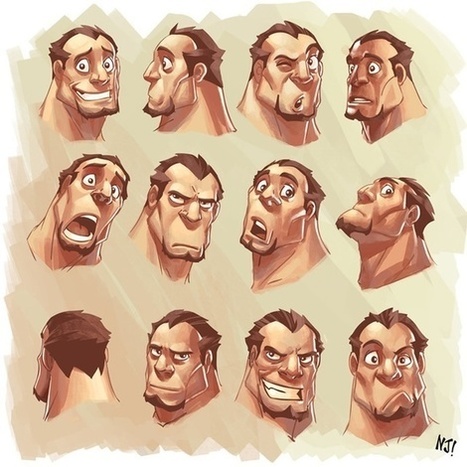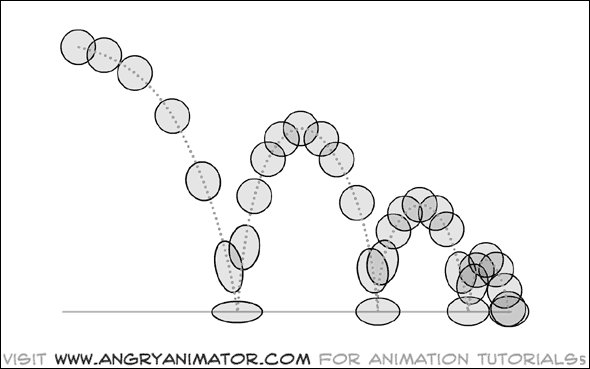Squash and Stretch
Squash and stretch was know to be perfected in the 30's and 40's. It was thought to be the ultimate technique and the most important animation principle out of all the other animation techniques. It added tremendous flexibility and life to the characters being animated.
When an object moves, its movement indicates the rigidity of the object. Objects of the real world have little flexibility, such as furniture, however most of the organic objects have some level of flexibility in their shape.
Anything that is composed of living flesh will show a fair amount of movement in its shape while performing. For example the movement of a bent arm. Usually when someone bends his/her arm their bicep will raise slightly. In animation an arm would usually be drawn as flat as possible and when the arm is bent the bicep that is raised would be raised a lot higher using squash and stretch to create an exaggeration, and to make the animation more interesting.
When an object moves, its movement indicates the rigidity of the object. Objects of the real world have little flexibility, such as furniture, however most of the organic objects have some level of flexibility in their shape.
Anything that is composed of living flesh will show a fair amount of movement in its shape while performing. For example the movement of a bent arm. Usually when someone bends his/her arm their bicep will raise slightly. In animation an arm would usually be drawn as flat as possible and when the arm is bent the bicep that is raised would be raised a lot higher using squash and stretch to create an exaggeration, and to make the animation more interesting.
Even facial expressions contain lots of squashes and stretches, whether it is chewing, smiling or even to show a specific expression. These can be applied by making the eyes bigger and stretching the face for surprises or eyes and ears being squashed downwards to show sadness, here are some examples:
Squash and stretch can also be applied to the body of a character as well. Here are some examples:
Another example that is widely used is the animation of a ball. When it is and its lowest it is a squash and when it is at its highest it is a stretch.
Squash and stretch makes the ball more flexible and more interesting. The squash and stretch that is applied to the ball defines the rigidity of the material making of the object. For example a bowling ball would not have a lot of squash and stretches because it is made up of hard material substances, but for a bouncing ball it would be the opposite - more squash and stretch would occur.
When animating using squash and stretch, in order to get a good result there is one important rule. CCV - Constant Consistent Volume.
Maintaining the volume of a character or object is very important as it can affect the image, weight, material and movement of a character or object.
Here is a link and can help further understand the principle of Squash and Stretch: https://www.youtube.com/watch?v=haa7n3UGyDc
For more information check out Richard Williams: The Animator's Survival Kits. Faber & Faber.London. Link: http://www.theanimatorssurvivalkit.com/









No comments:
Post a Comment